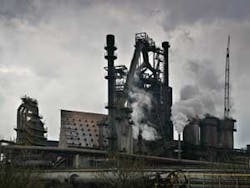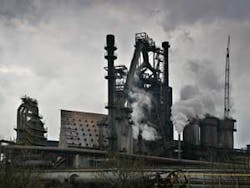Cap-and-trade is coming — with a vengeance!
Don Sunderland, Misys Open Source Solutions, New York, NY
How you and your company fare in the next few years will be determined in part by how you respond to regulatory challenges and your ability to understand and leverage the opportunities in this emerging new market.
The commitment by President Barack Obama to invest $150 billion over the next 10 years in alternative energy represents a policy direction rife with opportunity, but beset by challenges for energy providers. Not the least of these is the idea of funding this investment through the implementation of an economy-wide cap-and-trade system to reduce greenhouse gas (GHG) emissions.
For those unfamiliar with the term, cap-and-trade is a trading scheme, originally conceived to affect acid rain emissions reductions under the Environmental Protection Agency’s Clean Air Act in the 1990s. Most recently, it served as the basis for the European Union Emissions Trading Scheme (EU-ETS), launched in 2005, and the Regional Greenhouse Gas Initiative (RGGI), launched last fall among 10 states in the Northeast.
Under Obama’s plan, regulators will “cap” the quantity of GHG emissions for each trading period by issuing a limited number of permits — or “allowances” — to release the emissions. Each allowance covers one ton of carbon dioxide or its equivalent (CO2e). A ton of methane will require 23 CO2e allowances because its GHG effect is judged to be 23 times that of CO2. The scheme is meant to establish a value for “carbon,” initially through an auction, and thereafter through a secondary market. Likely, the value will increase as progressively fewer allowances are issued for subsequent trading periods to achieve reduction goals.
Cap-and-trade is expected to fund alternative energy investment by
- setting a portion of the proceeds from the auction aside for alternative energy research and development; and
- establishing a price for carbon, which will have to be factored into the cost of doing business by participating businesses, making it economically advantageous for them to invest in technologies that had heretofore proven too costly.
Cap-and-trade is also expected to provide an incentive for other reductions by allowing participants to offset some (probably a small) percentage of their emissions through the purchase of carbon reductions, achieved by others, in projects following audited protocols. Like allowances, these reductions — termed “carbon credits” or “carbon offsets” — will be denominated in tons of CO2e.
Of course, not everyone agrees that cap-and-trade is the answer, but whether you view it as the most efficient path to global climate improvement or as just one more gigantically invasive government boondoggle, the events following the Nov. 4 election have made it abundantly clear that cap-and-trade is coming — with a vengeance. How you and your company fare in the world it creates will be a function not only of your ability to respond to regulatory challenges, but of your ability to understand and leverage the myriad opportunities of this emerging new market.
From 2006 to 2007, carbon sales grew over 50% in both volume and value from $40 billion to $66 billion globally. Most analysts expect the market to exceed $2 trillion by 2030. Current growth is dominated by the EU-ETS compliance market, but it is worth remarking that the voluntary market — driven by the competition of companies and public organizations to demonstrate their social responsibility through the voluntary purchase of carbon offsets — continues to grow. Despite expectations that it would shrink in the face of mandated reductions, volume has more than tripled between 2006 and 2007, from $97 million to $331 million.
Of particular note is that, although the North American market more than doubled, the bulk of the growth was in the European market, which grew by over 500%, even as it moved into its second phase of mandatory cap-and-trade. Many analysts take this as an indication that the increased focus on greenhouse gases engendered by cap-and-trade has served to spur growth in the voluntary, unregulated portion of the market as well. They project that a similar effect is likely to proceed from the impending US cap-and-trade system.
Moreover, not only is the US compliance market expected to be three times the size of the EU-ETS, but its designation of “industry-wide” implies that, once fully implemented, it will encompass more than just the direct emitters such as manufacturers and energy suppliers, covered in the EU. This means that even companies that use energy only for heating, air-conditioning, lighting, and travel, will likely be required to implement carbon management, calculate their carbon footprints, and establish goals for reducing or offsetting their carbon production — in a sense, making carbon the lingua franca of energy use.
As an energy producer or supplier, this offers you some unique opportunities. If you already provide companies with energy, then you have unique insight into their carbon footprints as well. By adding carbon management knowledge to your energy expertise, you can create value (and new products) to help your customers come to grips with their perplexing new carbon future.
Similarly, if you are an energy producer, you have access to some of the best platforms for generating carbon and energy credits (e.g. mines, oil wells, and wind and solar generation facilities). The demand for these credits will grow in the new carbon market, but companies must understand the evolving carbon market in order to take advantage of these opportunities.
To address this issue, Misys Open Source Solutions has joined with a number of industry leaders in creating OpenCarbonWorld.com, an open access information portal covering every aspect of carbon markets. At OpenCarbonWorld.com you will find well-organized, easily accessible information on carbon markets, including the most comprehensive carbon wiki, a library of authoritative white papers and articles, and a news feed dedicated to evolving changes in carbon markets — all chosen and vetted by an editorial board of experts from across the industry, and accessible by an integrated search function that will quickly take you to the information you need. In addition, for companies interested in engaging in carbon planning and management, there is a freely accessible, wizard-driven, professional carbon planning suite based on the GHG protocol of the World Resource Institute. Come visit us at http://opencarbonworld.com/.
About the author
Don Sunderland, who heads Open Carbon World, is vice president of treasury and capital markets at Misys Open Source Solutions. He has nearly 20 years of experience in the financial industry, including roles at UBS, Sumitomo Bank Capital Markets, and Lehman Brothers.


